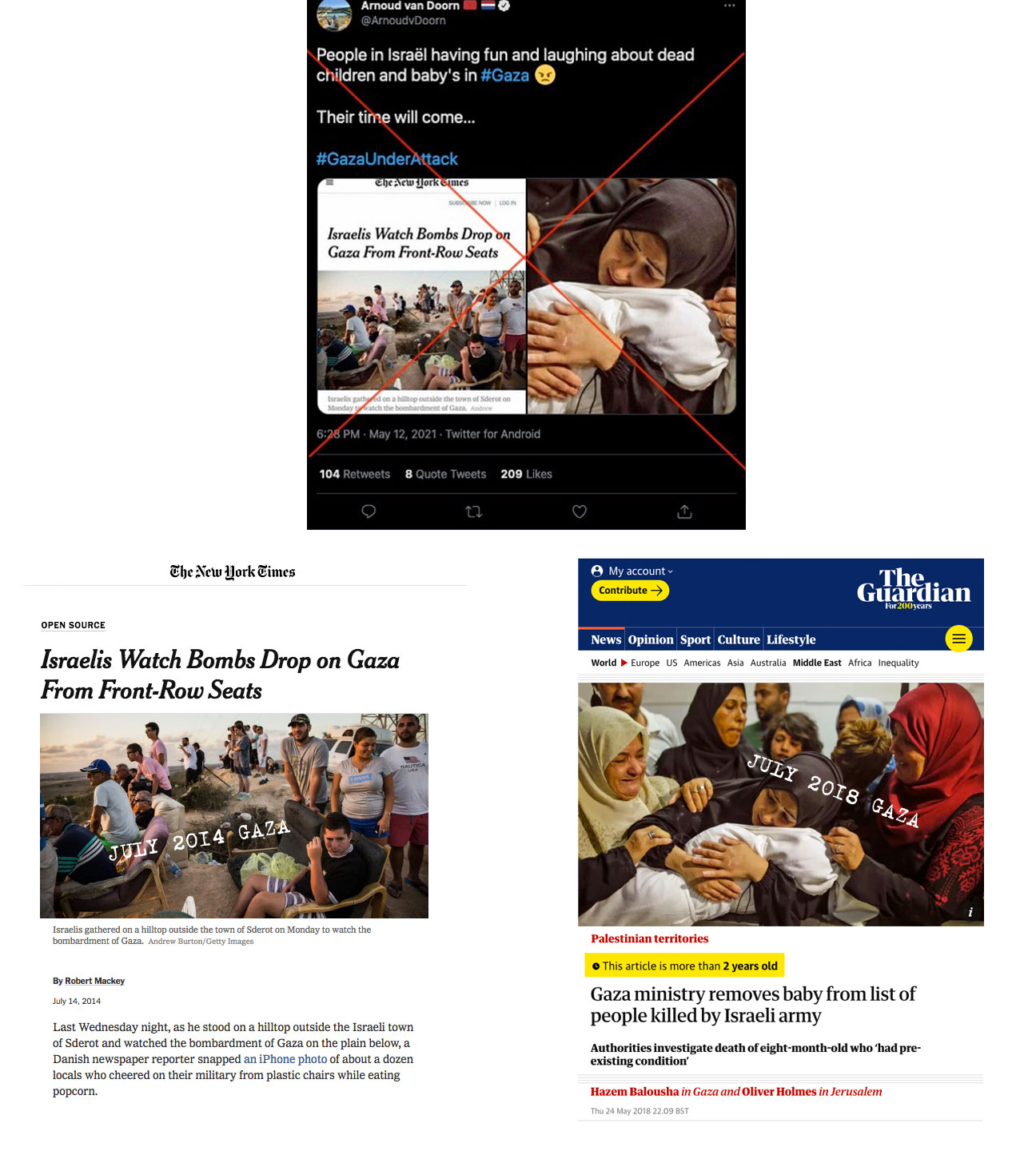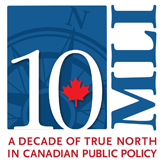The recent outbreak of violence in Gaza and Israel has been accompanied by a significant increase in disinformation about the conflict on social media. Photos falsely claiming to depict images of violence and destruction in Gaza have been posted to social media over the past few days.
One widely shared tweet featured two misleading images that were used out context. An image from a 2014 New York Times article was used to criticize Israelis for casually watching the conflict. Another image from a 2018 Guardian piece was misleadingly used to support a false claim that Israelis were “laughing about dead children and baby’s in #Gaza 😡”. It is important to note that the Guardian piece that the image of a dead baby was lifted from is about the Gaza Ministry of Health’s 2018 decision to remove that child’s name from a list of causalities of the Israeli-Palestinian conflict stating that: “Gaza’s Hamas-run health ministry has said it has removed an eight-month-old baby from a list of people killed by Israeli troops while authorities investigate to determine the cause of death.”

A photo of a child mopping up blood has been posted to Twitter, with the false claim that it was taken during the recent crisis. A reverse image search of the image reveals that it dates to 2013 and is likely taken in Syria. Our research shows that this same image has been used and repurposed for several Middle Eastern conflicts on various online and social media platforms.

A Tweet that includes images of several dead children has been widely shared on Twitter and warns users “Don’t allow Israeli news fool you”. The post includes four images that have been used out of context to falsely depict children that have suffered during the recent conflict. A reverse image search demonstrates that the images were originally sold by stock image company Getty Images. Three of the four are dated to 2014 in Gaza, while the other is from 2013 in Syria. Such clear disinformation could be defined as misinformation, given the intent and degree of falsification.

The fraudulent use of such graphic images outside of their original context may help amplify narratives and increase their social media virality. However, once exposed, such disinformation can have the unintended negative effect of casting doubt on the credibility of all related posts, claims and narratives – including those that are true and legitimate.
As such, DisinfoWatch recommends that social media users reverse-image-search photos that are connected with such violent and emotionally charged conflicts in order to cut through the fog of propaganda and information warfare.
One such tool is TinEye, which allows users to paste the URL of an image in a search field to find out where the image has been posted and used online.
This report was compiled thanks to information shared by Canadian journalist Terry Glavin.

